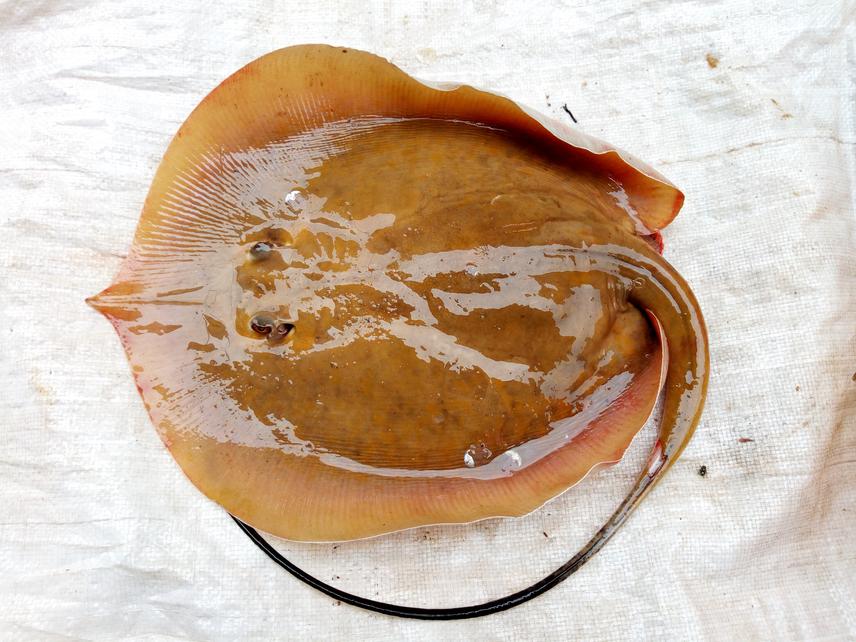Segun Olayinka Oladipo
Other projects
17 Jan 2023
Intensifying Conservation Actions for the Protection of Red List Threatened Stingrays in Nigerian Lagos Lagoon
7 Jun 2024
Developing Community-based Conservation Strategies for Improved Management of Stingrays in Nigeria
Daisy stingray (Fontitrygon margarita) is an evolutionarily distinct and highly threatened marine fish endemic to West Africa. Classified as Endangered by IUCN. Compared to other localities in West Africa, Nigeria harbours the largest species' range for daisy stingray (Compagno &Marshall, 2016). Though reported to occur in Nigerian lagoon in Lagos and Ogun States, our preliminary survey in 2020 revealed daisy stingray as an uncommon catch and its decline may continue due to uncontrolled fishing pressures. Despite the ongoing threats, there is little information available to inform conservation decision-makers. Specifically, there is no information on the species’ distribution pattern, conservation status, and ecological requirements in Nigeria. This baseline information is needed to infer the best conservation approach. As the first step to conservation, I aim to collect the first systematic dataset on status of daisy stingray in its range in Nigeria.

The daisy stingray (Fontitrygon margarita) is a large demersal ray (Froese & Pauly, 2019). Endemic to West African marine and brackish waters, this poorly known species has an extremely low fecundity (Compagno & Marshall, 2016). To date, information on its biology, distribution, and taxonomic status are unknown (Compagno & Marshall, 2016). Once common, catches of daisy stingray have become scarce in recent years, leading IUCN to assess it as Endangered. According to the IUCN, there is a need to identify correctly and monitor daisy stingray in catches and to clarify its geographic range.
To achieve this, we will first conduct ecological and social surveys to determine the distribution patterns of daisy stingray in Nigeria. Given the difficulty associated with differentiating our focal species from other stingrays, we will generate the first DNA barcode for daisy stingray using the environmentally friendly eDNA barcoding approach; and in combination with morphological characters, we will produce a reliable and valid tool for quick identification and delineation of daisy stingray in catches.
Further, we will use the ecological and social survey to determine the current conservation status of the daisy stingray in Nigeria by assessing the real and potential threats. Given that there is no information on the ecological requirements of daisy stingray in Nigeria, we will develop a species distribution model to determine the ecological requirements and habitat suitability of daisy stingray in light of the present and future climate scenario.
Finally, we will incorporate the results from the objectives above to develop the species action plan for the long-term persistence and survival of daisy stingray in Nigeria. Further, we will engage the relevant stakeholders and communities to develop a long-lasting action plan for the protection of the focal species and its associated habitat in Nigeria. Lastly, we will establish conservation clubs and citizen science groups in the local community.